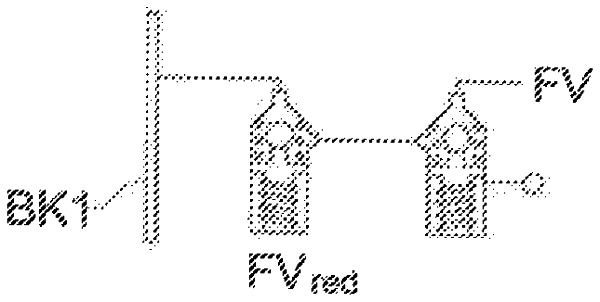| CPC B60T 8/4036 (2013.01) [B60T 7/042 (2013.01); B60T 8/1755 (2013.01); B60T 8/176 (2013.01); B60T 8/17616 (2013.01); B60T 8/268 (2013.01); B60T 8/4022 (2013.01); B60T 8/4081 (2013.01); B60T 8/885 (2013.01); B60T 13/145 (2013.01); B60T 13/16 (2013.01); B60T 13/165 (2013.01); B60T 13/58 (2013.01); B60T 13/586 (2013.01); B60T 13/662 (2013.01); B60T 13/686 (2013.01); B60T 13/745 (2013.01); B60T 17/221 (2013.01); B60T 2220/04 (2013.01); B60T 2260/08 (2013.01); B60T 2270/10 (2013.01); B60T 2270/30 (2013.01); B60T 2270/306 (2013.01); B60T 2270/402 (2013.01); B60T 2270/403 (2013.01); B60T 2270/404 (2013.01); B60T 2270/413 (2013.01); B60T 2270/604 (2013.01); B60T 2270/82 (2013.01); B60T 2270/88 (2013.01)] | 22 Claims |

|
1. A two-box brake system for use in autonomous driving operation of a vehicle and/or an electric vehicle/hybrid vehicle, the vehicle having two axles, at least one of the axles being driven by at least one electric drive motor, each axle having a pair of wheel brakes assigned thereto, the two-box brake system comprising:
an electric brake booster as a part of a first box;
an electronic stability control (ESP) unit as a part of a second box;
first and second hydraulic lines arranged to connect the electric brake booster to the ESP unit, wherein the first hydraulic line is part of a first hydraulic brake circuit and the second hydraulic line is part of a second hydraulic brake circuit,
wherein the electric brake booster comprises:
a. an actuating device, in the form of a brake pedal,
b. a first piston-cylinder unit arranged to supply pressure medium to at least one of the first brake circuit or the second brake circuit, the first piston-cylinder unit arranged to be actuated by the actuating device,
c. a second piston-cylinder unit with an electromotive drive, a transmission and at least one pressure supply piston for supplying pressure medium to at least one of the first and second brake circuits, and
d. a travel simulator and at least a first isolation valve arranged to hydraulically decouple the first piston-cylinder unit from the at least one of the first or second hydraulic brake circuits,
wherein the ESP unit comprises a valve device having one inlet valve per wheel brake, a storage chamber, and a motor-pump-unit, arranged to supply pressure medium to the wheel brakes, each inlet valve being hydraulically connected to a respective wheel brake to control pressure in the respective wheel brake,
wherein the system is adapted such that, when braking, the at least one electric drive motor is switched into a generator mode and a generator braking effect is determined,
wherein depending on the generator braking effect and a required braking effect a braking pressure is determined,
wherein braking pressure is established by actuating the at least one pressure supply piston,
wherein, in at least a first phase during a generator mode of the electric drive motor, a) the inlet valves connected to a first one of the pairs of wheel brakes are opened such that a first pressure in the respective wheel brakes is driven by actuation of the second piston-cylinder unit with the electromotive drive while the first piston-cylinder unit is decoupled from the pair of the wheel brakes by the first isolation valve, and b) the inlet valves of a second one of the pairs of wheel brakes are closed to establish a second pressure in the another pair of the wheel brakes, the second pressure being lower than the first pressure.
|